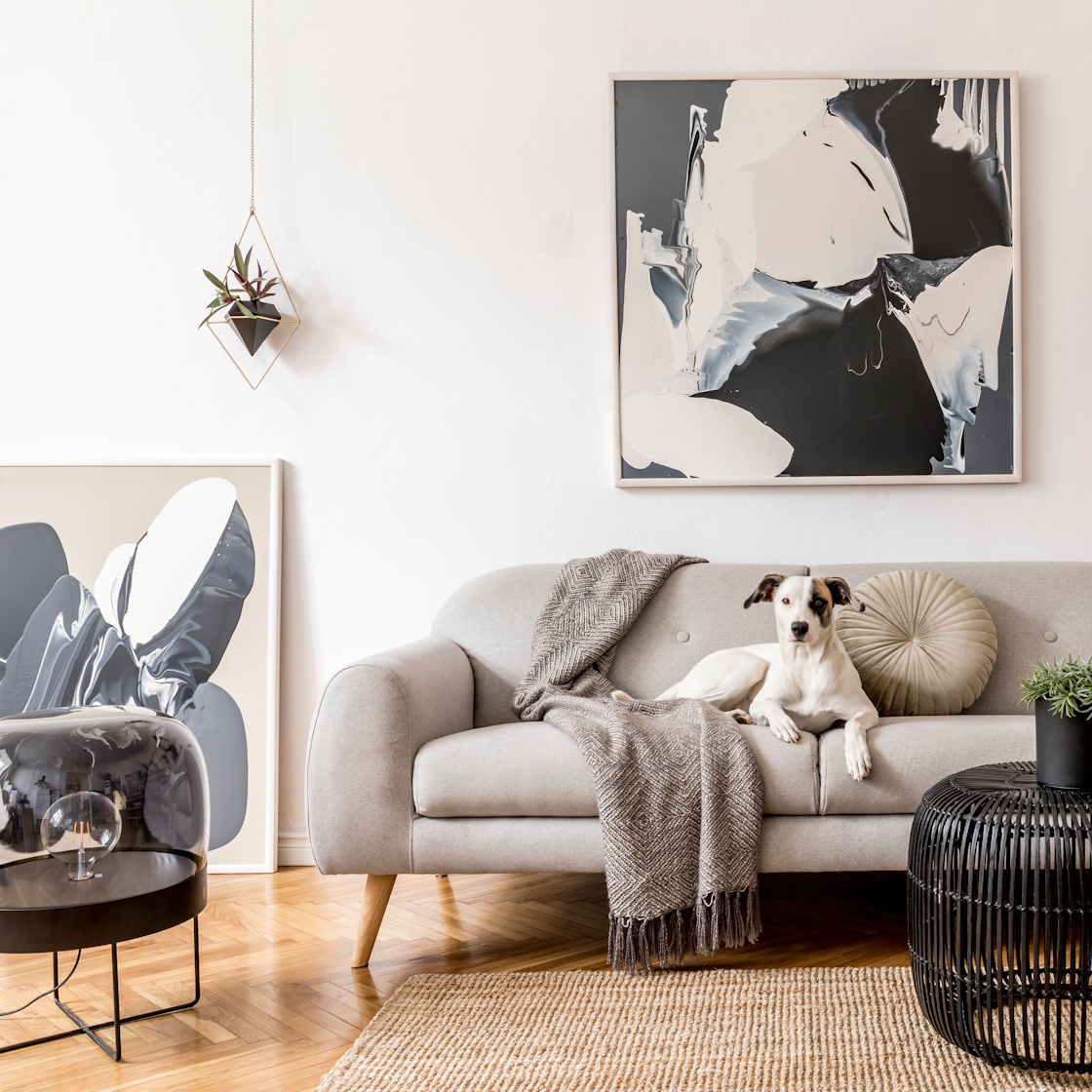
When it comes to personalizing your home, few elements make as bold a statement as artwork. Art not only reflects your personality and passions but can also serve as the anchor for the entire aesthetic of a room. Whether you’re a homeowner looking to express your style or a seller preparing your property for the market, knowing how to use art effectively can make all the difference.
Start with the Art
Choosing artwork as the focal point for your room’s design provides a natural launch point for determining color and style. Select a piece that speaks to you—whether it’s a vibrant abstract painting, a serene coastal photograph, or a modern sculpture. Use it as the foundation for the room’s design by drawing from its colors, textures, and overall mood.
Color Scheme Guidelines
Once your artwork is chosen, apply a proven color strategy to achieve a cohesive and inviting look:
- Primary Color (60%): Choose a dominant color from your artwork to serve as the base for the room. This could be the color of your walls, large furniture pieces, or area rugs.
- Secondary Color (30%): Pull a supporting hue from the piece to complement the primary color. Incorporate this into curtains, smaller furniture, or accent walls.
- Accent Color (10%): Use a bold or contrasting shade from the artwork for smaller details, such as throw pillows, vases, or artwork frames, to tie everything together.
This 60-30-10 rule is a timeless approach to creating a balanced and harmonious color scheme.
Style Consistency
Artwork often reflects a distinct style, whether traditional, modern, coastal, or eclectic. Use the artwork’s style as a cue for the rest of the room’s decor. For example, a vibrant, contemporary painting pairs well with sleek furniture and clean lines, while a classic oil painting might inspire a more traditional, textured design with rich materials like leather and wood.
To Personalize or Neutralize?
Here’s where the decision-making gets tricky: should you keep the art and decor personal or opt for a neutral look? It depends on your goal:
- If You’re Staying: Personalization is key. Display pieces that resonate with you and create a home that reflects your tastes. Don’t shy away from bold statements; your home is your sanctuary.
- If You’re Selling: Buyers need to envision themselves in the space, so depersonalization is essential. Consider neutralizing bold artwork and overly specific motifs to appeal to a broader audience. For example, replace a vivid personal painting with a more subdued landscape or abstract that complements a neutral color palette.
Balancing Personalization and Marketability
If you’re selling but don’t want your home to feel stark, create a space that feels inviting yet broadly appealing. A strategically chosen piece of neutral yet stylish art can still anchor the room and lend warmth without alienating potential buyers. Opt for art with softer colors, simple lines, and universal themes, such as nature or geometric patterns.
Final Thoughts
Artwork isn’t just decoration; it’s a powerful tool to create a cohesive, beautiful, and emotionally resonant space. Whether you’re decorating for yourself or staging your home for sale, art can set the tone, inspire a design scheme, and even influence how others perceive the space. By following a thoughtful approach to color and style—and knowing when to personalize or neutralize—you can make your home stand out for all the right reasons.
Looking for more tips on making your home irresistible to buyers? Let’s chat!


